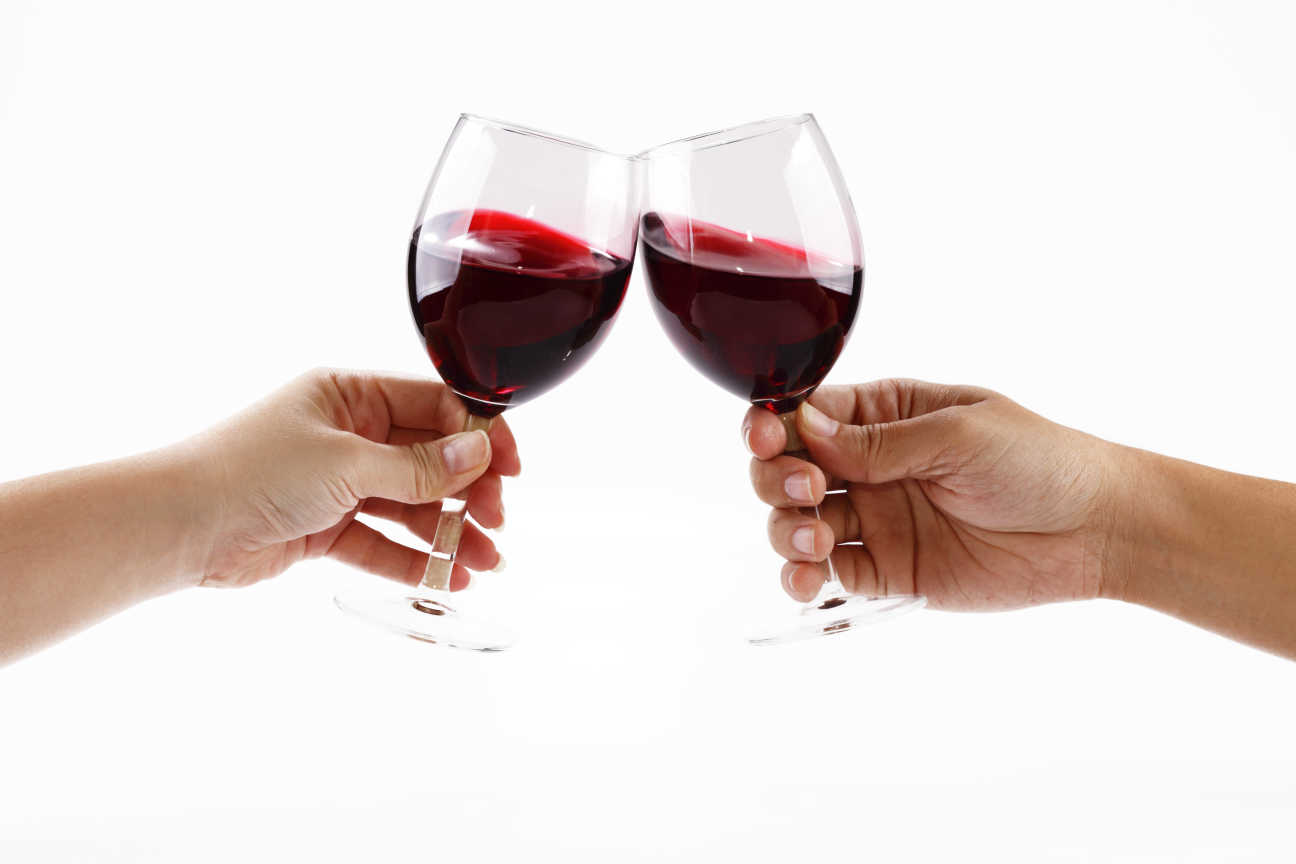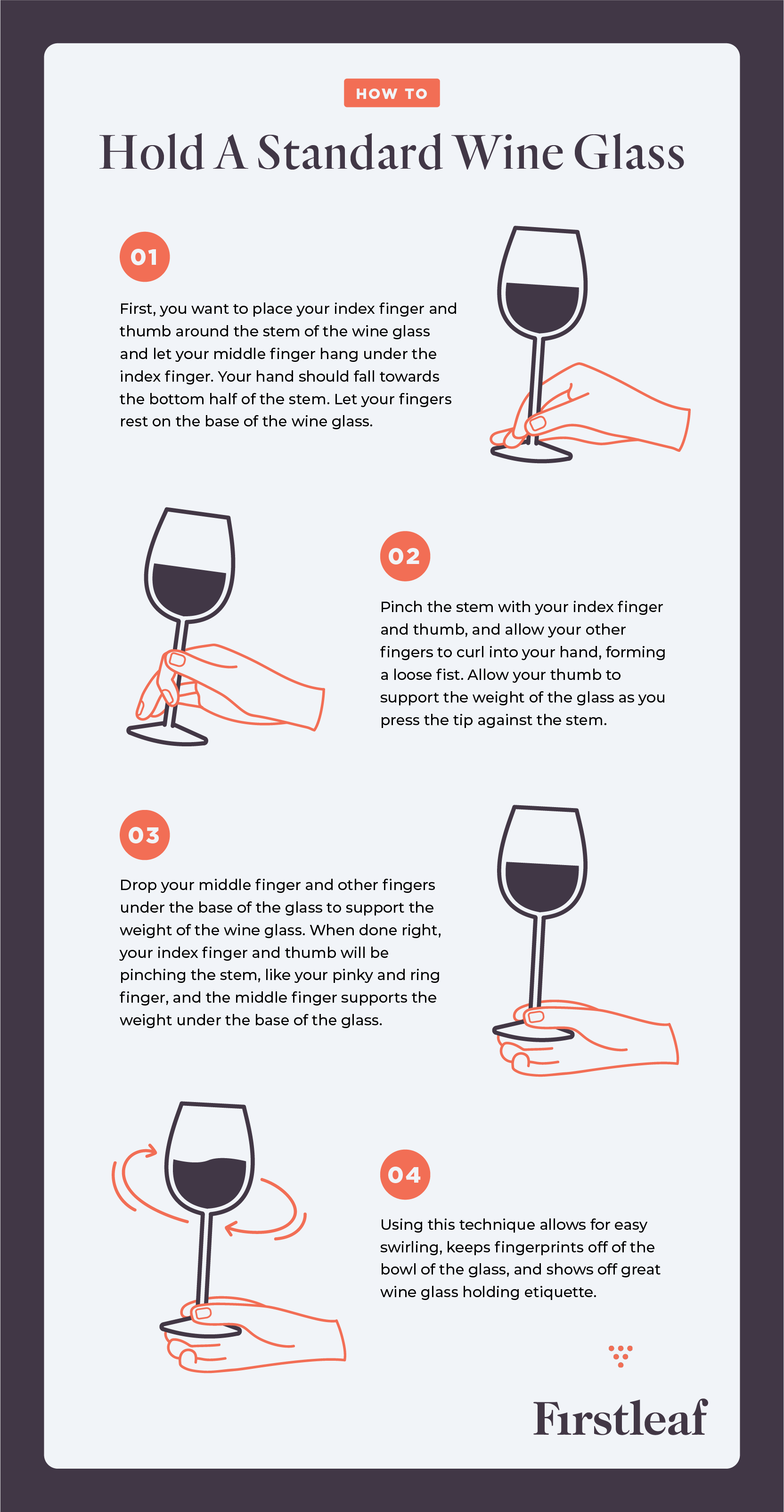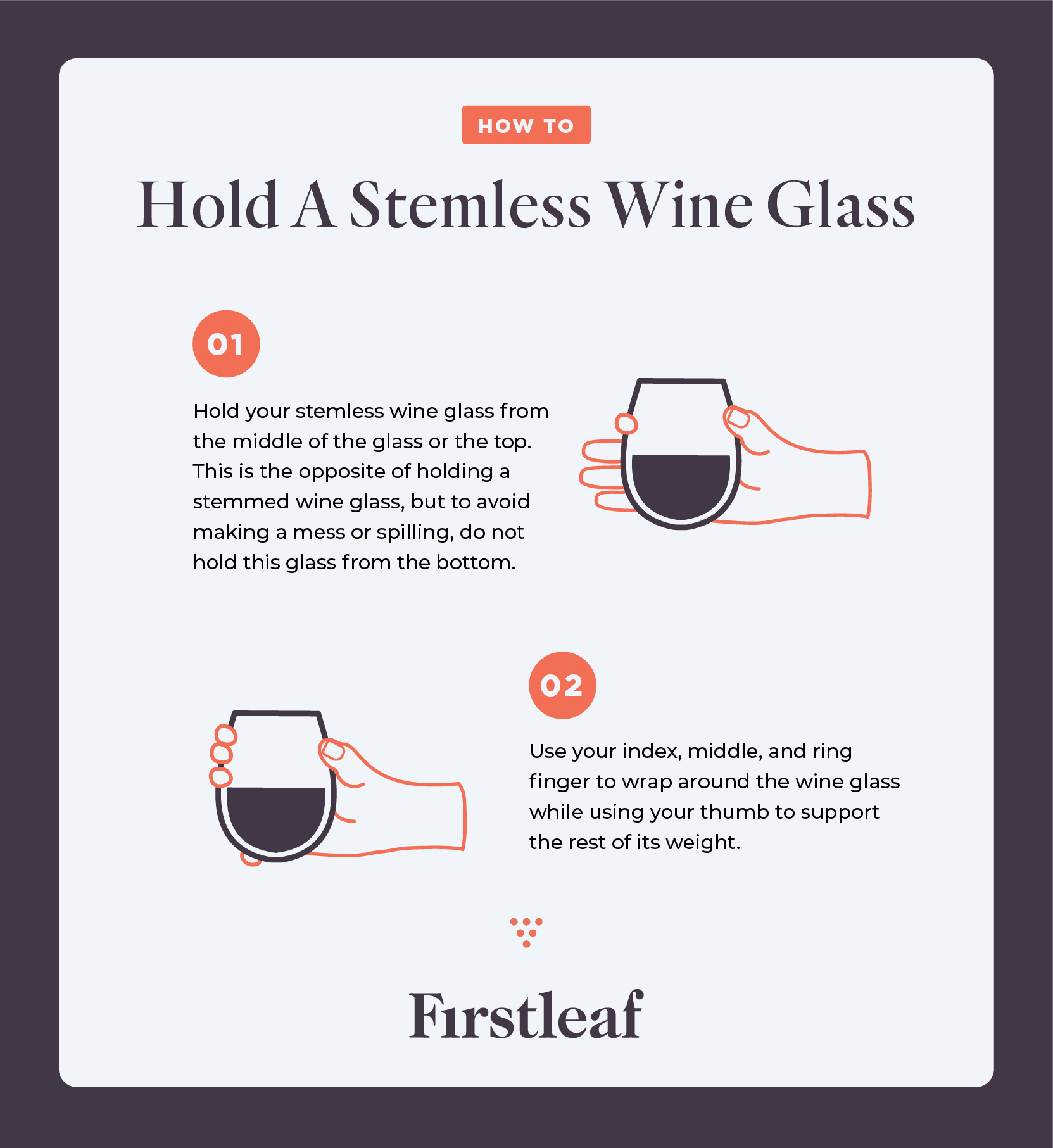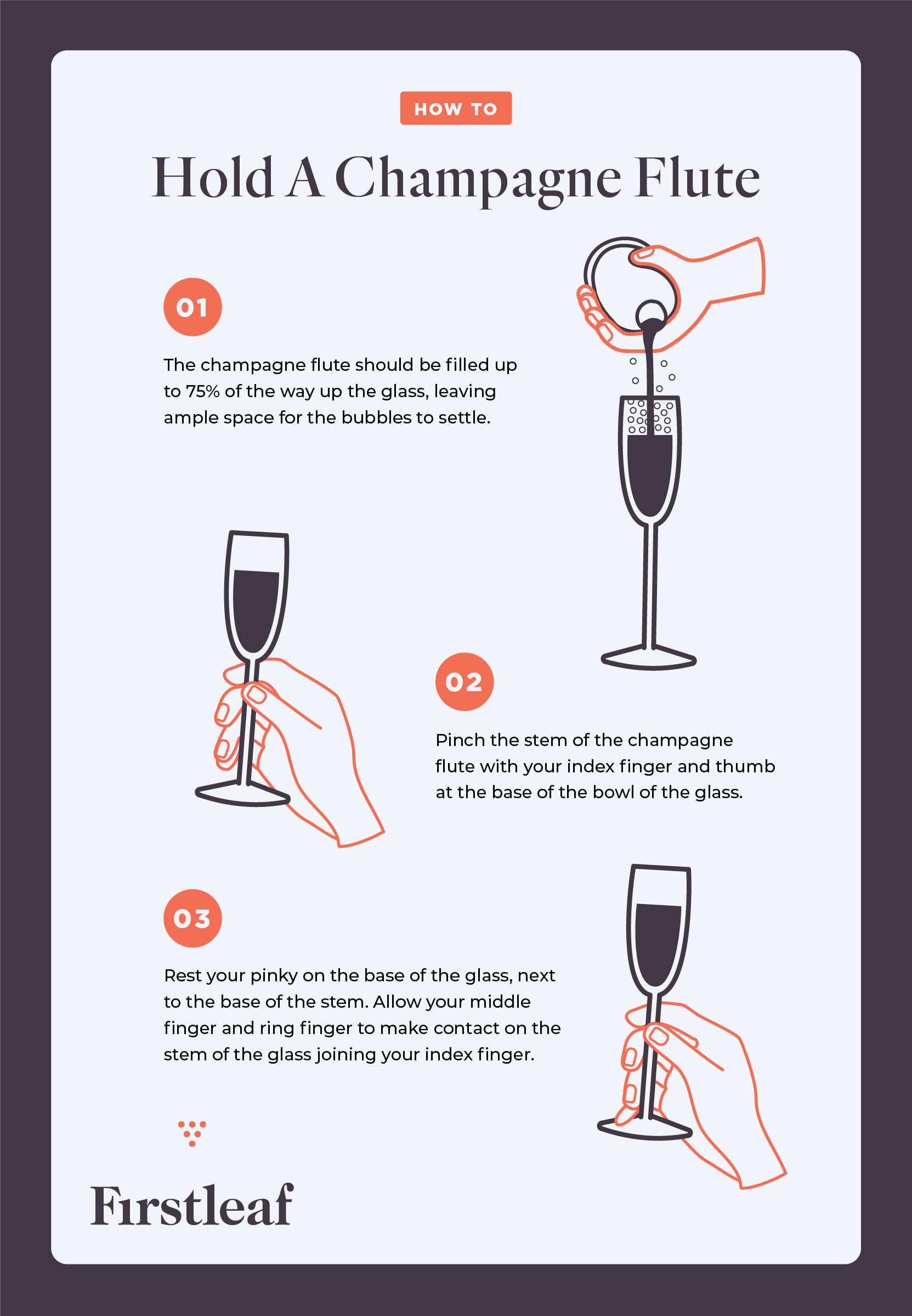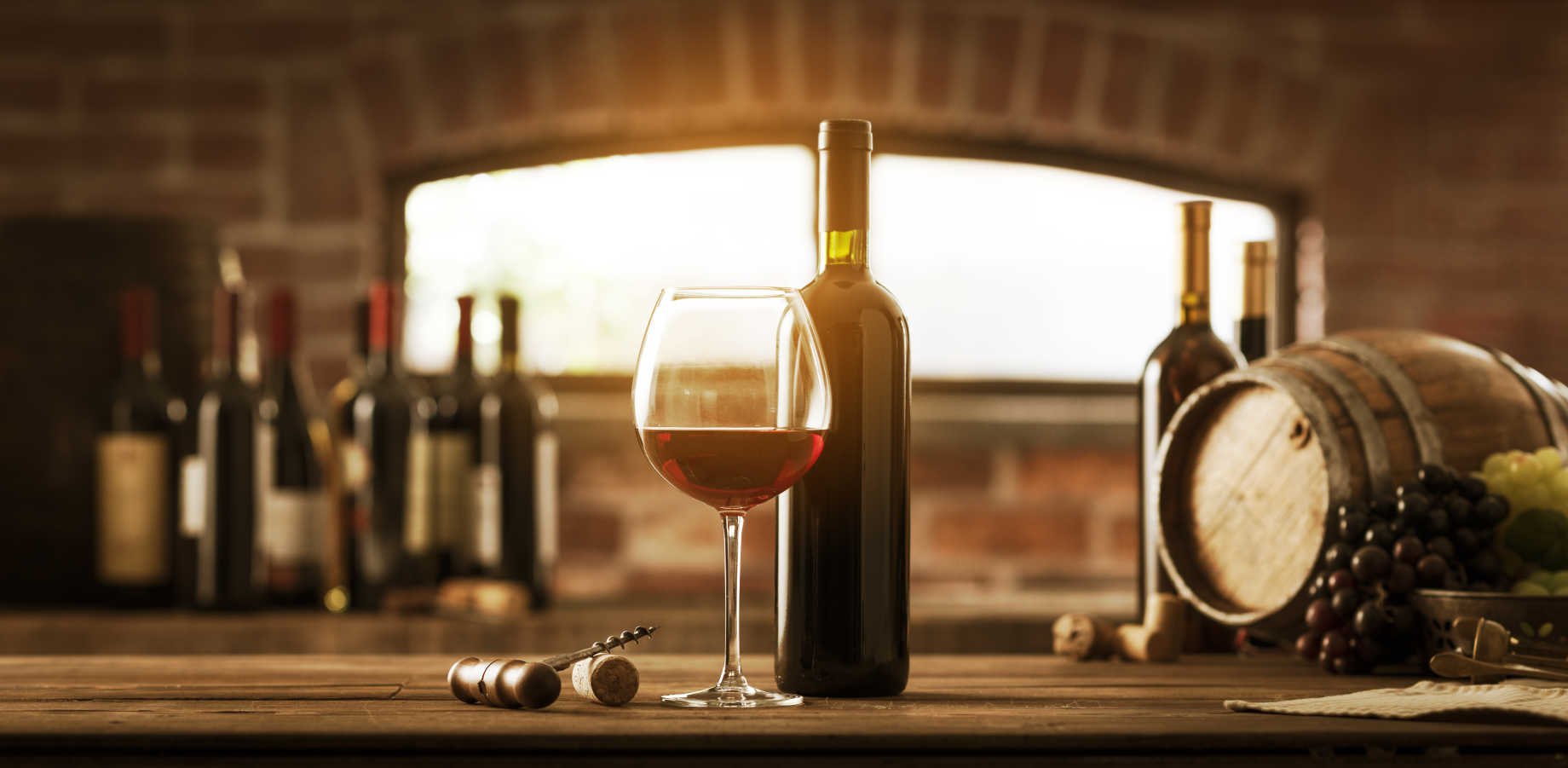How to Hold a Wine Glass
Understanding how to handle a wine glass the proper way will enhance your wine experience
Want to learn how to hold your wine glass like an expert? You don’t need a master sommelier to show you the correct way to hold a wine glass. That’s what Firstleaf wine club is here for. Although it seems trivial, having a nuanced understanding of how to handle a wine glass the proper way will enhance your experience with wine—whether it’s with red wine, white wine, or sparkling wine.
Even winemakers must consider what kind of glassware is best for their bottle of wine. The right way to hold a wine glass or a champagne flute starts with proper placement of the pointer finger, index finger, and middle finger at the base of the glass. Proper wine glass holding etiquette, served at room temperature, makes for a more refined wine-drinking experience.
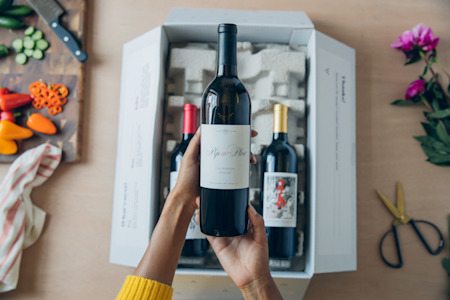
Take The Quiz
Learning about different wine varietals and regions is fun. Take the quiz now to explore wines matched to your unique palate.
Take The QuizIN THIS ARTICLE:
Want personalized wines?
Get your first box of wines for $44.95 + free shipping.

Is There a Proper Way to Hold a Wine Glass?
Learning to hold your wine glass the right way has multiple benefits other than just looking fancy. Knowing how to hold a wine glass allows you to swirl your wine with ease. Swirling your wine is not just aesthetically pleasing, but has real effects on your aromatic experience. Swirling your wine lets oxygen in the air breathe with your wine, releasing the wine’s aroma. This is why true wine connoisseurs often swirl as soon as they open the bottle of wine.
Aside from looking elegant, wine drinkers and wine lovers know that having proper wine glass etiquette also has tangible benefits. For example, after you pour yourself a glass of Cabernet Sauvignon keeping the majority of your fingers at the stem, rather than the base of the glass or the bowl of the glass, will help your wine stay at room temperature. Generally, you want your red wine at room temperature. Alternatively, keeping the majority of your fingers at the stem will help your white or sparkling wines stay chilled longer. Wrapping your fingers or hand around the bowl of the glass will significantly raise its temperature.
What Is the Right Way to Hold a Red or White Wine Glass?
The right way to hold a red or white wine glass starts with proper placement of the pointer finger, index finger, and middle finger at the base of the wine glass. Holding a wine glass is relatively simple, but there are some rules you want to follow and others you do not. Remember, if you have a glass of red wine or white wine, do not hold the bowl of the glass, this will warm up your wine above room temperature diminishing its flavors.
Use these simple steps to hold your wine glass the right way:
First, you want to place your index finger and thumb around the stem of the wine glass and let your middle finger hang under the index finger. Your hand should fall towards the bottom half of the stem, let them rest on the base of the wine glass.
Pinch the stem with your index finger and thumb, and allow your other fingers to curl into your hand, forming a loose fist. Allow your thumb to support the weight of the glass as you press the tip against the stem.
Drop your middle finger and other fingers under the base of the glass to support the weight of the wine glass. When done right, your index finger and thumb will be pinching the stem, as your pinky and ring finger, and pointer finger supports the weight under the base of the glass.
Using this technique allows for easy swirling, and keeps your fingerprints off of the bowl of the glass, and shows off great wine glass holding etiquette.
Wine Glasses and Stemware
Considering what type of wine you have at home can also determine what kind of stemware you use on your wine glasses. When choosing the stemware for your wine glass, we must also consider the right way to handle this glass to maximize the experience of breaking open a new bottle of wine. Stemless wine glasses are essentially the same as other wine glasses, but they too have a proper way of handling them.
Hold your stemless wine glass from the middle of the glass or the top. This is the opposite of holding a stemmed wine glass, but to avoid making a mess or spilling, do not hold this glass from the bottom.
Use your middle finger, index finger, and pointer finger to wrap around the wine glass while using your thumb to support the rest of its weight.
Wrapping your whole hand around the glass is the wrong way to hold it and can cause unwanted heating of the drink. Using a stemless wine glass is for your favorite Bordeaux is perfectly fine but when drinking with other connoisseurs, try to aim for stemmed wine glasses.
What Is the Right Way to Hold a Champagne or Sparkling Wine Glass?
Knowing the right way to hold a glass of Champagne or sparkling wine will optimize your experience. There are differences between a wine glass, a champagne flute, and a coupe, but the holding technique is mostly the same. (Flutes are long narrow glasses with long stems, and coupes are stemmed glasses featuring a broad, shallow bowl.)
Champagne or sparkling wine is best served chilled, which is why proper placement of your fingers is imperative to prevent unnecessary heating in your drink.
The champagne flute should be filled up to 75% of the way up the glass, leaving ample space for the bubbles to settle.
Pinch the stem of the champagne flute with your index finger and thumb at the base of the bowl of the glass.
Rest your pinky on the base of the glass, next to the base of the stem. Allow your middle finger and ring finger to make contact on the stem of the glass joining your index finger.
What Is the Right Way to Hold a Stemless Wine Glass?
While this is not a glass type for a specific wine, these can be good for your daily wine glass and are most assuredly dishwasher safe and easy to care for. When it comes to stemless wine glasses, is it okay to hold the wine glass by the bowl? Not really. Stemless wine glasses also have a proper way of handling them.
Hold your stemless wine glass from the middle of the glass or the top. This is the opposite of holding a stemmed wine glass.
To avoid making a mess or spilling, do not hold this glass from the bottom.
Use your middle finger, index finger, and pointer finger to wrap around the wine glass while using your thumb to support the rest of its weight.
Do not wrap your whole hand around the glass—that’s the wrong way to hold it and can cause unwanted heating of the drink.
How Do You Choose the Right Wine Glass?
Considering what type of wine you have at home can also determine what kind of stemware you use on your wine glasses. When choosing the stemware for your wine glass, we must also consider the right way to handle this glass to maximize the experience of breaking open a new bottle of wine.
Even winemakers must consider what kind of glassware is best for their bottle of wine. When selecting wine glasses you should consider the body of the wine you're serving. If it's a full-bodied red, choose a Bordeaux glass. Bordeaux glasses are similar in size to the average universal red wine glasses. If it's a light-bodied red like Pinot Noir, go with a bigger Burgundy glass. These goblets have huge bowls to trap the delicate aromas of your wine. Typical white wine glasses are smaller, but the richer, oaked varieties of Chardonnay, Viognier, and orange wines can benefit from a Chardonnay glass that is a bit bigger.
How Should You Swirl Wine?
There's a reason you see so many sommeliers and wine connoisseurs swirling their glasses at wine tastings. Swirling a wine glass causes rapid aeration which releases more of a wine's aroma. By swirling we can closely assess the color of the wine, we can see the texture of how it moves in the glass, and we can release different aromas in a glass of wine that were hidden before. Swirling is not just affectation, it's a practical act that wine drinkers can use to enhance every glass of wine they taste. Here’s how to hold your glass when you swirl:
First find a flat surface and a stemmed wine glass. Set the foot of the glass down on the surface and fill the glass 1/4th full, maybe even less. The reason to keep your glass so lightly filled is that it makes it easier to swirl and aerate. Less wine in the glass means that more is coming into contact with oxygen when you swirl it. If you fill the glass too full you will not only spill, but you won't be able to effectively aerate which will dull the bouquet.
Once you have wine in your glass move it in little circles keeping the foot of the glass on the flat surface. Control the motion without your wine coming all the way up the sides of the glass. The bigger the bowl of the glass the easier it will be to swirl. Practice this controlled circular motion until you get the feeling for it.
Then you can lift your glass off the table and try it in the air. Pretty soon you'll be swirling with the best of them and see that your wine tastes that much better!
How Do You Sip Wine Properly?
Now the fun part. To drink your red, white, or sparkling wine, hold the stem of your glass, take a small sip, and swirl the wine in your mouth so you can fully taste the wine’s flavor. Hold the wine in your mouth for 5 seconds or so, swallow, then savor the aftertaste. You can also “chew” your wine to enhance your wine tasting. Chewing ensures the wine covers your entire mouth and hits all your tastebuds. Read our article to learn more about how to sip and serve wine.
Are You Ready to Hold Your Wine Glass Properly?
Then it’s time to order exciting new wines from Firstleaf, America’s most personalized wine club and subscription service! We take the guesswork out of wine selection, but leave all the adventure, delivering world-class wine tailored to your taste. We sample over 10,000 wines a year, selecting only the finest bottles. Then we curate each box to your unique preferences so you can discover new favorites, not just once, but over and over again.
The next time you and your oenophile friends sit down for a glass of red wine or white wine, sign up with Firstleaf to get great value deals on your favorite wines and premium Firstleaf exclusives.
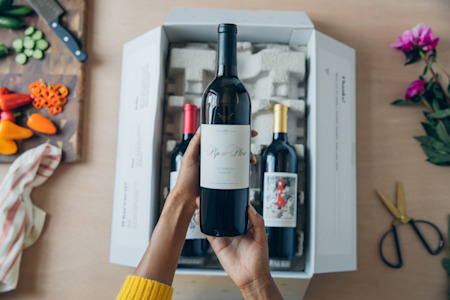
Take Our Quiz Today
Get award-winning delicious wines from all over the world shipped straight to your door. Take the quiz to get the perfect pairings for your holiday season.
Take The Quiz TodayIN THIS ARTICLE
Want personalized wines?
Get your first box of wines for $44.95 + free shipping.


WinePrint™ by Firstleaf
Are you looking to learn more about your wine preferences? Check out our Wine Print for an in-depth look at your personal tasting profile. Discover your favorite wines, varietals, regions, and tasting notes and get personalized recommendations wherever you are.
Learn More
